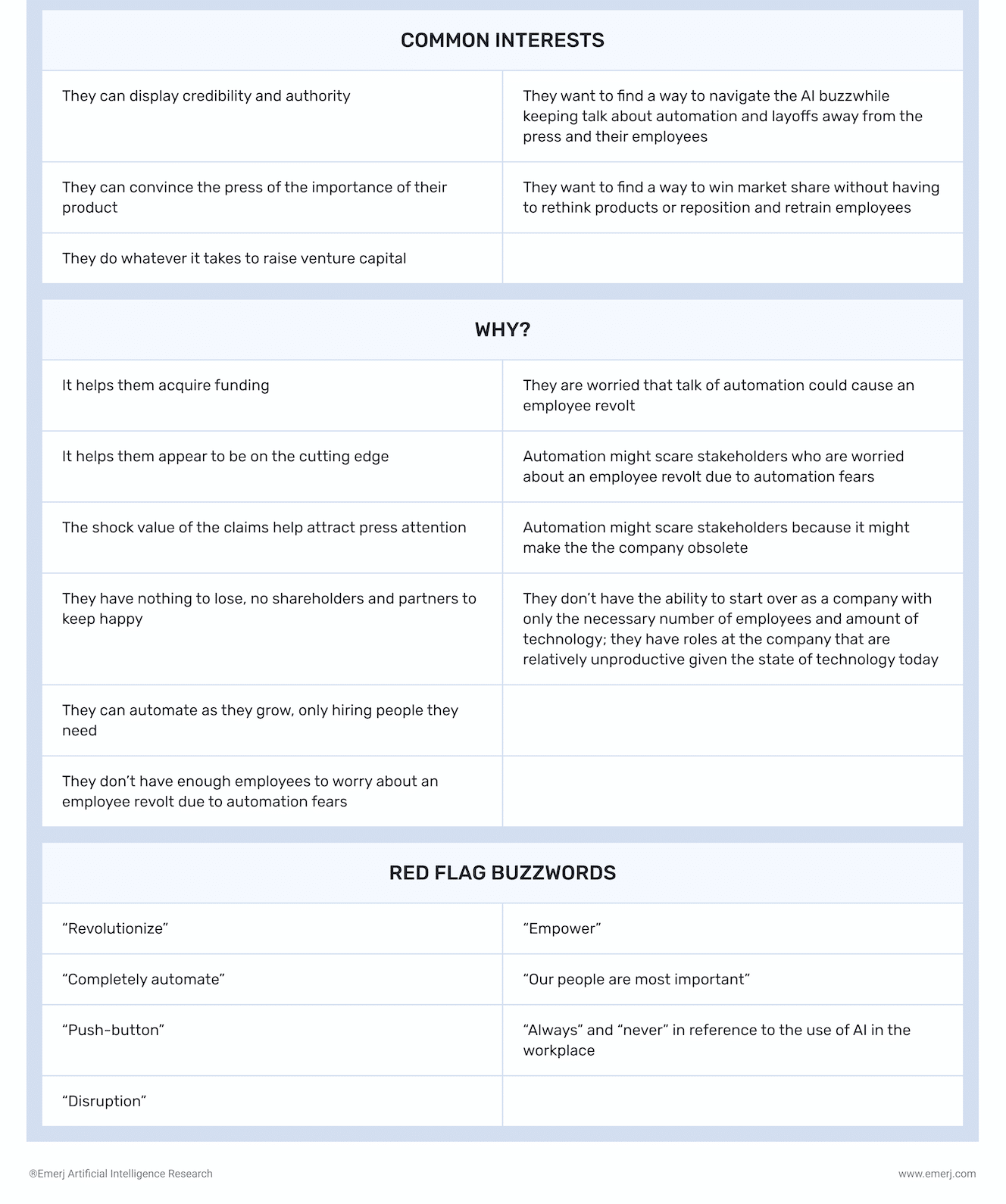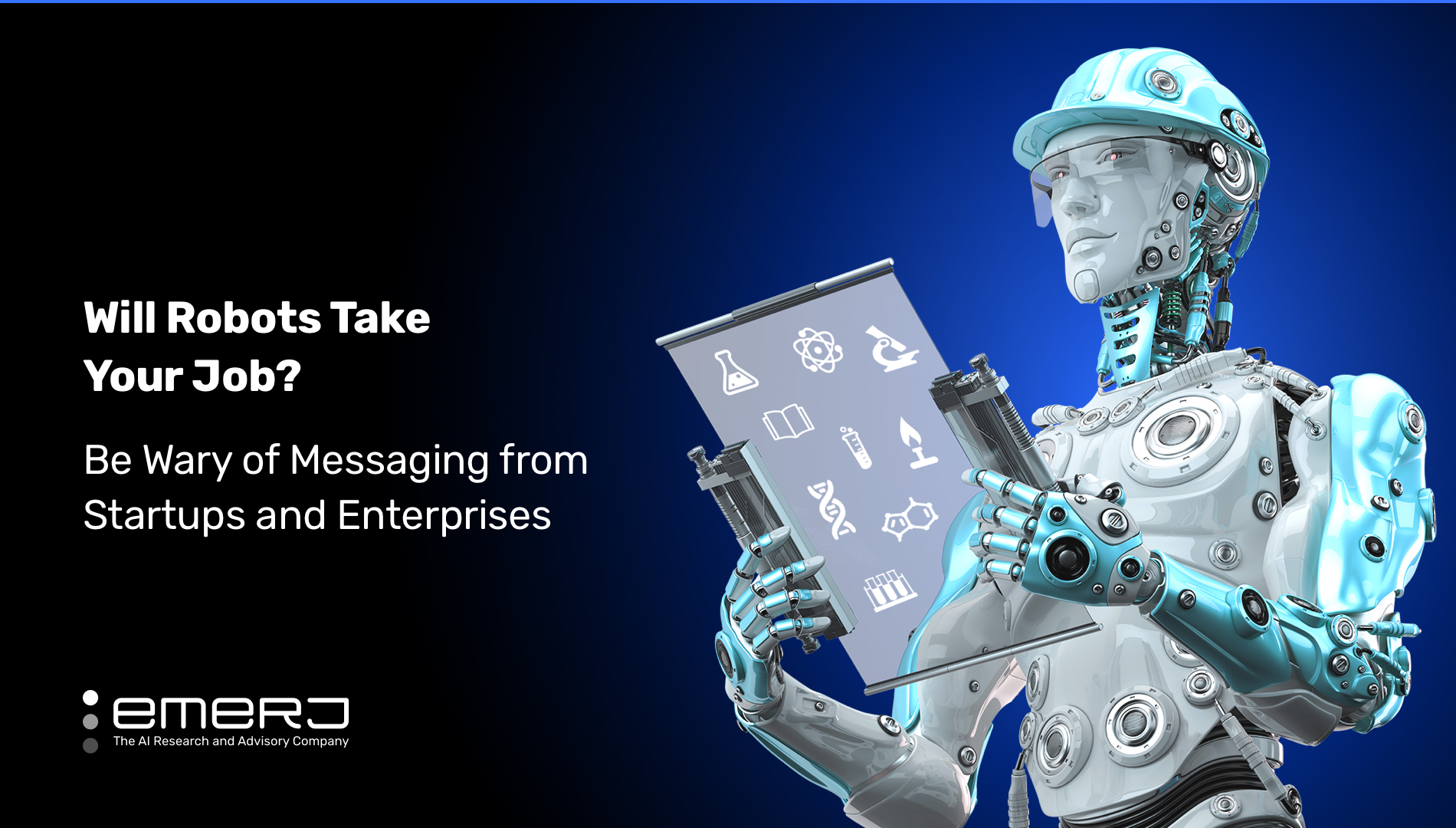Something that dawned on me very early on in reading biography and history is that incentives rule the world, that company’s, nations, individuals ultimately do things primarily for their own self-interest. And there’s nothing inherently wrong with that, but it’s important to bear it in mind.
Business is no different. Artificial intelligence is no different. Like with any topic that has political ramifications, the loudest voices on both sides of the debate over the job loss risk of AI are the sides that have the most at stake. They are the individuals and the groups that have the most to gain or to lose, not necessarily for finding the truth, but for forwarding the narrative that would behoove them and behoove their interests.
This doesn’t make these parties bad people; it just means that “good” for them, in terms of the achievement of their goals and potentially the assurance of their perceived well-being, isn’t about figuring out the ultimate truth, but again, in promoting a story that boosts their own names.
So when it comes to job loss here at Emerj, we’ve looked at thousands of companies over the last four years in sectors such as finance and healthcare and heard stories from startups big and small, from AI buyers, from consultants at large firms and small firms, and from small private firms and public firms.
We’ve heard a variety of perspectives on job risk and which jobs are likely to be disrupted, as well as which industries are likely to actually see real job loss in a potentially dangerous way to certain segments of society and where the transition is going to be more gradual. I’ve noticed a pattern over the course of these four years across the groups that tend to be loudest about promoting job loss to the point where it almost feels disingenuous.
It feels like these groups can’t possibly believe what they’re saying. Similarly, there’s another group that tends to underestimate the risk of job loss by automation. As mentioned, in any given conflict over a politicized issue, the loudest group are those who have the most at stake. These groups again seem as though they are forwarding an agenda. In this article, I’m going to highlight who these groups are by going through the below graphic in depth:



Groups that Overestimate Job Loss
The groups that tend to overestimate job loss are often either startups under 50 employees or boutique consulting firms recently rebranded to be all about emerging technology. A lot of the time these “AI consulting firms” were before just doing completely generic IT consulting for 15 years in a row and then decided to frame themselves to be about artificial intelligence.
Another common type of organization that will promote a hyperbolic level of job loss risk is small technology firms that have rebranded to be about AI, blockchain, or a similar buzzword. These could be existing firms that have done something in technology for the last 15 years, perhaps in telecom or life sciences, and all of a sudden they have rebranded to an AI company even without having any data science staff on their team.
These smaller groups tend to be the sources of the most overblown job loss and risk statements, and they tend to have common traits:
They Have Few Employees
If they talk about something like the automation of particular roles, they’re not worrying large sums of people at their company that they don’t know. Generally, everybody’s down the hall from everybody else. The CEO might even be able to shake hands with everybody in the company on a relatively regular basis.
These are tightly knit groups, and so the kind of internal disruption that might happen for the company is by our estimation much less intense than it is for enterprises.
They Have Few Stakeholders
Similarly, these companies tend to have few stakeholders. They are almost never publicly traded firms. They may even have a relatively small number of clients, and so, again, they don’t have a wide variety of powerful players to upset with their hyperbole. They’re not going to have people selling their shares on the open market as a result of their bluster, for example.
They Can Get on the Radar of Possible Customers
If the media reports on one of these smaller firms purporting that a revolution will come to the sector they sell into, this might actually get the company on the radar of potential clients. That’s why they pivoted to AI in the first place; this is the behooved interest. Revolutionary change on the aggregate could be good for the company. It could finally get them some press coverage. Oftentimes, people in the press who interview AI consulting firms are just going to interview them and expect them to be experts on AI. They might never do any homework and figure out if anyone at the company even has AI or data science experience.
These firms want to convince the market and the press of the importance of their product and their approach. For example, if retail jobs are going to be drastically overhauled in the short-term, companies like theirs are going to be very valuable. If they can predict a kind of automation revolution, that might be the ticket to their credibility and their ticket to customers.
They Can Convince Venture Capitalists to Invest
Startups are going to want to claim that their product will bring the ultimate disruption of the sector into which they are selling because terms like “ultimate disruption” and “revolution” could be appealing to venture capitalists. Promoting the job loss narrative could be a way to win venture money.
They Use Buzzwords
These small firms also tend to use buzzwords in press releases and on their websites time and time again. They use words like “revolutionize” or “completely automate.” Anytime we see the phrase “completely automate,” it raises a red flag for us here at Emerj.
Artificial intelligence is not a process whereby systems can be completely automated often without humans somewhere along the line. The process of setting up artificial intelligence systems, integrating them into existing data infrastructures, revamping data infrastructures, training algorithms, and updating algorithms is extremely complicated and requires talented people. We’ve done a lengthy article on applying artificial intelligence in the enterprise and its inherent challenges.
“Completely automate” is a hyperbolic claim, and anyone who says it is really stretching oftentimes what artificial intelligence is actually capable of doing, downplaying the integration, the data requirements, and talent requirements.
Another term is “push button.” The setup and strategy around leveraging AI technology are complex and certainly far from “push button.”
Then, of course, there is the classic: “disruption.”
If these words are stated one too many times on company LinkedIn descriptions and websites, business leaders should consider this a red flag that the company is hiding behind marketing language because they don’t have the data science talent on their team to back up their claims and provide legitimate AI software.
Groups that Underestimate Job Loss
Large multinational companies are the most likely to underestimate job loss. In particular, companies will often downplay job loss when they are trying to rebrand themselves as being leaders in AI even if they don’t actually employ data science talent.
These companies often use the word “augment” over “automate.” These companies share common traits that are in general the opposite of those that small firms looking to exaggerate the job loss risk share.
They Have Many Employees
These companies can’t risk upsetting all of their employees, many of whom have never interacted with the company leadership in their lives and never will. AT&T, for example, can’t talk about automating customer service with AI without gravely worrying their employees. They risk their employees leaving because they feel undervalued. These companies will say things like “our people are the most important thing for our company,” and similar platitudes in order to discuss AI in the open without alarming their employees. They want to figure out how to keep the discussion they’re having about automation and layoffs away from the press and their employees.
They Have Many Stakeholders
Enterprises have shareholders, people trading their company on open markets and people who wield power over the business to keep happy. They have big global business partners and accounts, and if they start talking about disruption in ways that makes their employees nervous and perhaps cause the market to fluctuate a little, they risk problems with their stakeholders. If they start talking about technology that might disrupt the sector into which the company is selling, that doesn’t bode well for the company when it comes to how their shareholders might react. As a result, they’ll underestimate the impact of this technology.
They Have to Navigate the AI Buzz Carefully
These companies are often going to have a hard time adjusting to artificial intelligence They’re still looking to be successful as workforce automation becomes more common, but they want to limit the revolt from their employees and stakeholders as a result. They don’t want to talk openly about putting employees in different positions, retraining them, and possibly laying them off.
As a result, they need to choose their words carefully for press releases about their AI initiatives. They talk a lot about augmentation, but not automation. In addition, they often use the word “empower,” such as in “We’re all about empowering people with AI.” They position themselves as virtuous against the startups that are talking about replacing people with machines. They need to do this even if they’re about to lay off 2,000 people because they can’t risk an employee revolt. Another statement they often say: “Our people are the most important thing to us.”
In addition, these companies speak in terms of “always” and “never.” They frame AI as a black and white discussion: “it will do this; it won’t do that.”
What Business Leaders Should Know
These groups tend to be the loudest voices in this conversation for business leaders realistically thinking about their strategy. Don’t listen to either of them exclusively and listen to them with healthy skepticism.
The fact of the matter is that some job roles are likely to be augmented with artificial intelligence and some are going to likely be automated in the decade ahead. People filling certain roles at companies might just be repositioned into other roles if they possess more diverse skillsets. In other cases, automation will make some employees obsolete because they can’t easily be repositioned into another role at the company.
Business leaders shouldn’t suspect that something like that is completely out of the realm of possibility. Likely both are going to be the case. Business leaders should bear in mind that the loudest companies overestimating and underestimating job loss are pushing forward their own interests.
As artificial intelligence continues to make its way into major industries, there will be changes. There will be instances of augmentation, and there will be automation. Some automation might be slow, and people’s skills will be repurposed. Other automation might be quick, and people might be left without a job. As business and government leaders, we should be thinking seriously about the potential low hanging fruit automation opportunities within our business, not just to win market share, but to consider what to do with our teams.
What do we do with those people? How do we bend our business, our training, our skills development programs in order to make the most of our human resources and in order to move our business forward and continue to win in the market? Sometimes those incentives are at odds.
Header Image Credit: Fortune



















